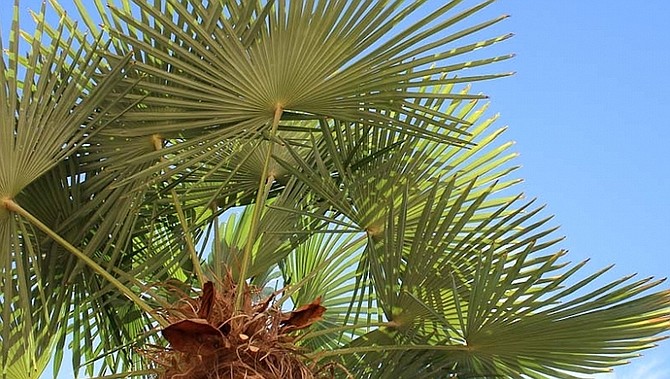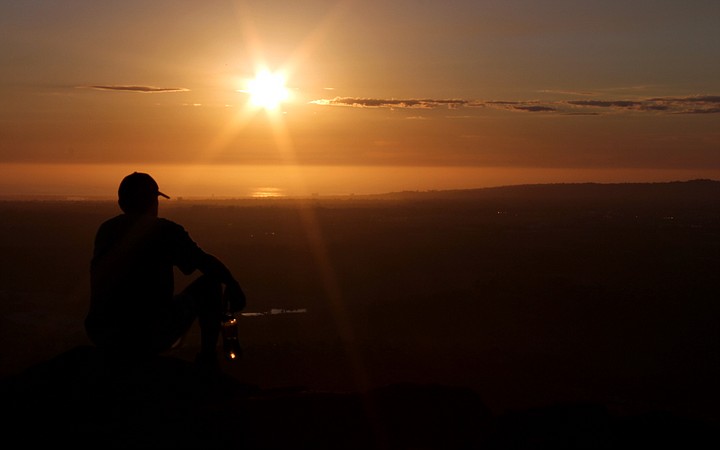 Facebook
Facebook
 X
X
 Instagram
Instagram
 TikTok
TikTok
 Youtube
Youtube

Ripening Palm Fruit, hanging in great clusters on California’s native fan palms (Washingtonia filifera), can be seen this month. Native Americans of centuries past utilized the black, pea-sized fruit, which consists of a deliciously sweet but almost paperthin skin surrounding a hard seed. (These are not “California dates” — the fruit of cultivated palms introduced into California’s deserts from northern Africa.) Our native fan palms can be seen in their natural habitat in about two dozen canyons within Anza Borrego Desert State Park. They have been planted widely elsewhere in California, including along the main streets of Palm Springs.

Spectacular Sunsets and Sunrises are characteristic of late fall and early winter’s dry spells. You can drive up to Soledad Park atop Mount Soledad in La Jolla or Mount Helix near La Mesa for an all encompassing view. Or try hiking up to vantage points such as Cowles Mountain in the San Carlos area and Woodson Mountain near Ramona. Don’t forget to bring a flashlight for the trip up or down.
At this time of year the Big Dipper lies shyly down at its lowest just after dark, due north. It’s entirely below the north horizon if you’re as far south as Miami. But by midnight the Dipper stands straight up on its handle in fine view in the northeast — while Cassiopeia has wheeled over to the northwest to stand nearly upright on the bright end of its W shape.
Seen any early Geminid meteors yet? The shower is due to peak late on the night of December 13-14.
The above comes from the Outdoors listings in the Reader compiled by Jerry Schad, author of Afoot & Afield in San Diego County. Schad died in 2011. Planet information from SkyandTelescope.org.


Ripening Palm Fruit, hanging in great clusters on California’s native fan palms (Washingtonia filifera), can be seen this month. Native Americans of centuries past utilized the black, pea-sized fruit, which consists of a deliciously sweet but almost paperthin skin surrounding a hard seed. (These are not “California dates” — the fruit of cultivated palms introduced into California’s deserts from northern Africa.) Our native fan palms can be seen in their natural habitat in about two dozen canyons within Anza Borrego Desert State Park. They have been planted widely elsewhere in California, including along the main streets of Palm Springs.

Spectacular Sunsets and Sunrises are characteristic of late fall and early winter’s dry spells. You can drive up to Soledad Park atop Mount Soledad in La Jolla or Mount Helix near La Mesa for an all encompassing view. Or try hiking up to vantage points such as Cowles Mountain in the San Carlos area and Woodson Mountain near Ramona. Don’t forget to bring a flashlight for the trip up or down.
At this time of year the Big Dipper lies shyly down at its lowest just after dark, due north. It’s entirely below the north horizon if you’re as far south as Miami. But by midnight the Dipper stands straight up on its handle in fine view in the northeast — while Cassiopeia has wheeled over to the northwest to stand nearly upright on the bright end of its W shape.
Seen any early Geminid meteors yet? The shower is due to peak late on the night of December 13-14.
The above comes from the Outdoors listings in the Reader compiled by Jerry Schad, author of Afoot & Afield in San Diego County. Schad died in 2011. Planet information from SkyandTelescope.org.
Comments